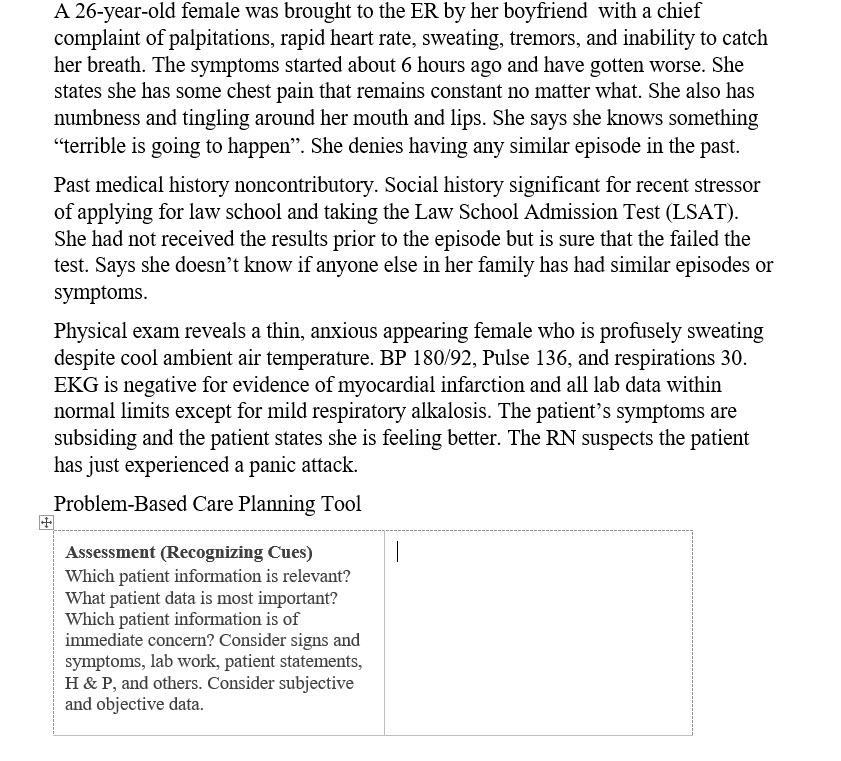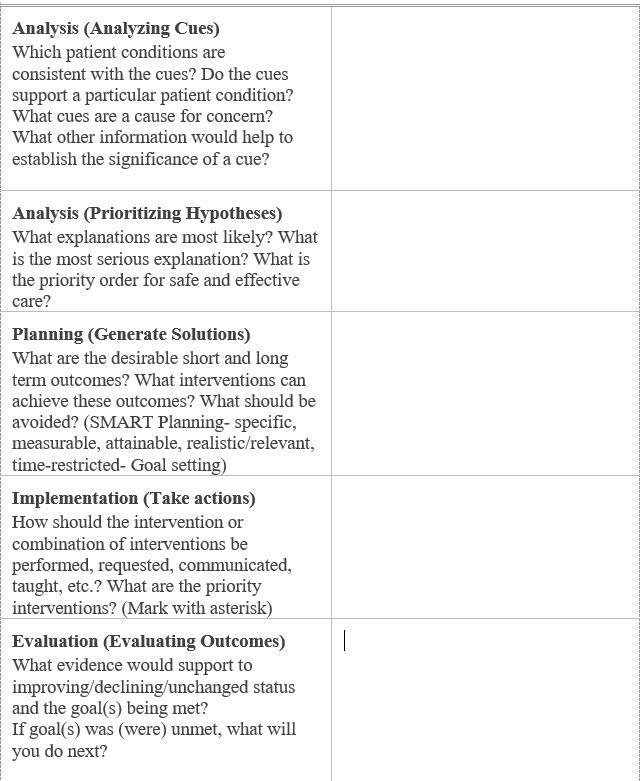Answered step by step
Verified Expert Solution
Question
1 Approved Answer
A 26-year-old female was brought to the ER by her boyfriend with a chief complaint of palpitations, rapid heart rate, sweating, tremors, and inability


A 26-year-old female was brought to the ER by her boyfriend with a chief complaint of palpitations, rapid heart rate, sweating, tremors, and inability to catch her breath. The symptoms started about 6 hours ago and have gotten worse. She states she has some chest pain that remains constant no matter what. She also has numbness and tingling around her mouth and lips. She says she knows something "terrible is going to happen". She denies having any similar episode in the past. Past medical history noncontributory. Social history significant for recent stressor of applying for law school and taking the Law School Admission Test (LSAT). She had not received the results prior to the episode but is sure that the failed the test. Says she doesn't know if anyone else in her family has had similar episodes or symptoms. Physical exam reveals a thin, anxious appearing female who is profusely sweating despite cool ambient air temperature. BP 180/92, Pulse 136, and respirations 30. EKG is negative for evidence of myocardial infarction and all lab data within normal limits except for mild respiratory alkalosis. The patient's symptoms are subsiding and the patient states she is feeling better. The RN suspects the patient has just experienced a panic attack. Problem-Based Care Planning Tool Assessment (Recognizing Cues) Which patient information is relevant? What patient data is most important? Which patient information is of immediate concern? Consider signs and symptoms, lab work, patient statements, H & P, and others. Consider subjective and objective data. T Analysis (Analyzing Cues) Which patient conditions are consistent with the cues? Do the cues support a particular patient condition? What cues are a cause for concern? What other information would help to establish the significance of a cue? Analysis (Prioritizing Hypotheses) What explanations are most likely? What is the most serious explanation? What is the priority order for safe and effective care? Planning (Generate Solutions) What are the desirable short and long term outcomes? What interventions can achieve these outcomes? What should be avoided? (SMART Planning- specific, measurable, attainable, realistic/relevant, time-restricted- Goal setting) Implementation (Take actions) How should the intervention or combination of interventions be performed, requested, communicated, taught, etc.? What are the priority interventions? (Mark with asterisk) Evaluation (Evaluating Outcomes) What evidence would support to improving/declining/unchanged status and the goal(s) being met? If goal(s) was (were) unmet, what will you do next? T
Step by Step Solution
★★★★★
3.50 Rating (160 Votes )
There are 3 Steps involved in it
Step: 1

Get Instant Access to Expert-Tailored Solutions
See step-by-step solutions with expert insights and AI powered tools for academic success
Step: 2

Step: 3

Ace Your Homework with AI
Get the answers you need in no time with our AI-driven, step-by-step assistance
Get Started


